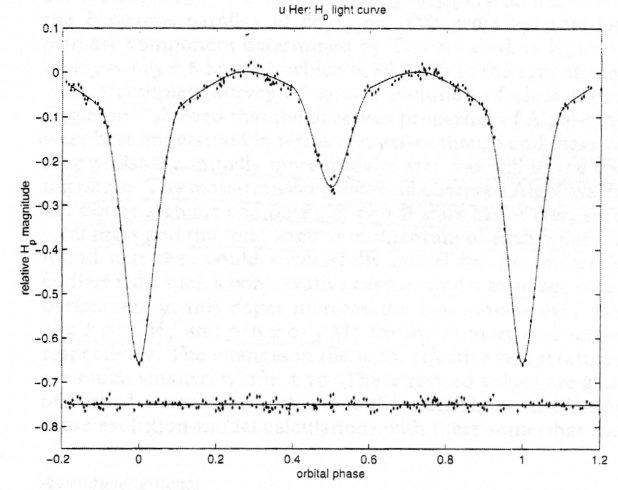
 |
The partial eclipse of the binary 68 (u) Herculis. The deeper of the two eclipses occurs when the fainter secondary gets partially in front of the brighter primary and vice versa. The brightness is not constant outside of eclipse because of the changing shapes projected to the observer and because the light of the brighter star reflects off the surface of the fainter. (From R. W. Hilditch in The Observatory.) |